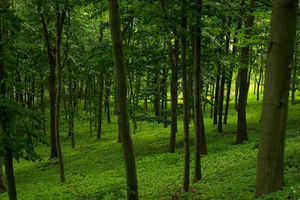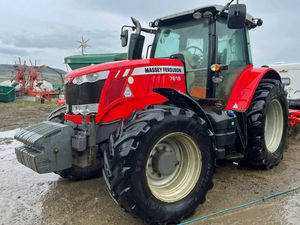Grants available in bid to source far more wood
There is government drive to source an additional two million tonnes of wood from undermanaged woodlands in England, writes Martin Jones.

There is government drive to source an additional two million tonnes of wood from undermanaged woodlands in England,
.
There are about 170,000 hectares (420,000 acres) of unmanaged woodland in the UK. Many are on farms and are not realising their full potential in terms of timber production and environmental benefits due to a lack of economic incentive and management in the past.
Markets are now available for wood products, which, until fairly recently, were considered non-commercial. Revenues from poorer grade timber now more than covers felling costs, particularly with good road access.
Thinning a woodland is often the best way to bring an 'unmanaged' woodland back into management. Thinning poorer quality trees gives the remaining 'seed' trees additional light and canopy space to develop and add volume increment in the future. This will also allow more light to the woodland floor promoting the development of an understorey of diverse plant and shrub species.
With careful management, even thinning small woodlands on a farm and utilising branchwood from broadleaves as well as the stemwood can provide enough fuel to supply the requirements of a biomass boiler, heating both the farmhouse and surrounding buildings. Timber chipped or split into logs can be used to provide a cheaper and sustainable alternative to traditional heating fuels. Higher value timber can be sold into the sawlog or fencing market. Currently, there is strong demand for home-grown oak.
Alternatively, wood can be milled on site and used in-house on the farm for construction or fencing.
As well as the income generated from timber, there are also forestry grants ('Woodland Improvement Grant: Woodfuel') available to assist landowners with developing the infrastructure needed to extract wood, i.e. forest tracks, and work associated with the measuring and marketing of wood involved in a timber sale.
Owners are entitled to apply for the grants if they have a Forestry Commission approved plan in place (there is a planning grant available for that too!), the woodland is larger than 3 ha and the woodland areas must have missed two or more conventional thinning interventions.
The 'timber' sale part of the grant contributes 60 per cent of the standard costs for collecting woodland inventory data, preparing the timber sale, like marking the trees, drawing up the sales contract and harvesting supervision. The 'roads' part of the grant pays 60 per cent of costs for the creation or upgrading of tracks
* Martin B Jones is a forestry consultant and managing director of The Woodland Stewardship Company, based in Shrewsbury.



